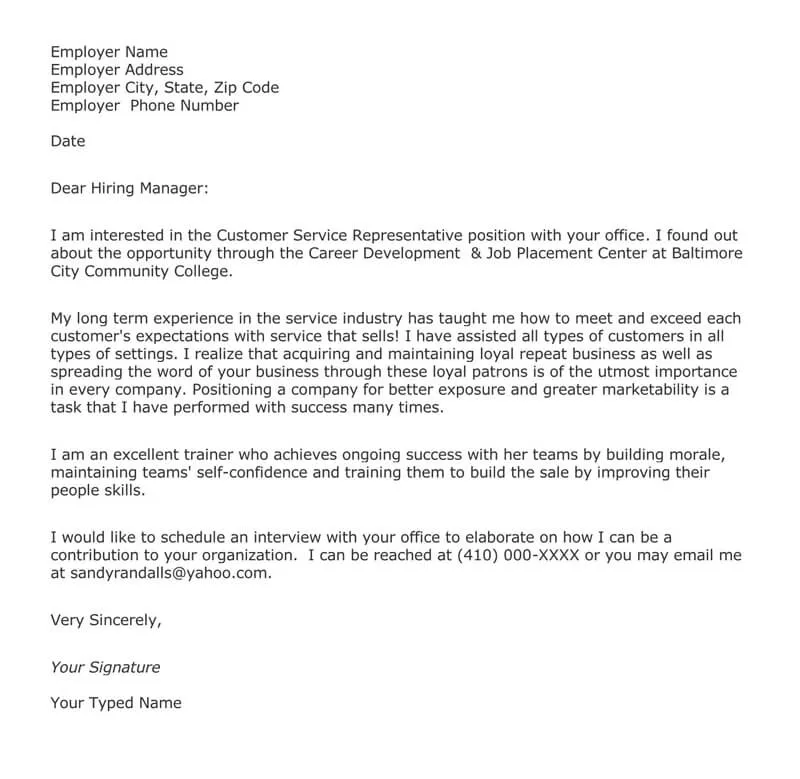What is a Cover Letter Email Attachment
A cover letter email attachment is a document, usually in PDF or DOCX format, that you include with your job application email. It serves as an introduction to your resume, highlighting your skills, experiences, and your enthusiasm for the specific position. It’s a crucial part of the application process as it provides an opportunity to showcase your personality and explain why you are a good fit for the role. Think of it as your personal sales pitch, designed to entice the hiring manager to review your resume and consider you for an interview. A well-crafted cover letter can significantly increase your chances of getting noticed, especially in a competitive job market. It allows you to elaborate on your qualifications in a more narrative format, going beyond the bullet points of your resume and providing context and a more compelling story. Whether you choose to attach it or include it in the body, the cover letter is your first impression and a chance to make an impact.
Why Attach a Cover Letter
Attaching a cover letter offers several advantages. It allows you to present a more polished and professional document, especially if your cover letter includes formatting such as custom fonts, tables, or images. The attachment keeps the cover letter separate from the email body, which allows for better readability, especially if the hiring manager is quickly scanning through applications. Furthermore, a cover letter attachment provides a clear and concise presentation, with no risk of email clients altering the document’s formatting. Attaching your cover letter also streamlines the application process, ensuring the hiring manager can easily access both your cover letter and resume in a single download. Many employers expect a cover letter to be attached, as it is considered a standard part of the application. It also means you are demonstrating your attention to detail and your commitment to the application process.
Formatting Your Cover Letter for Attachment
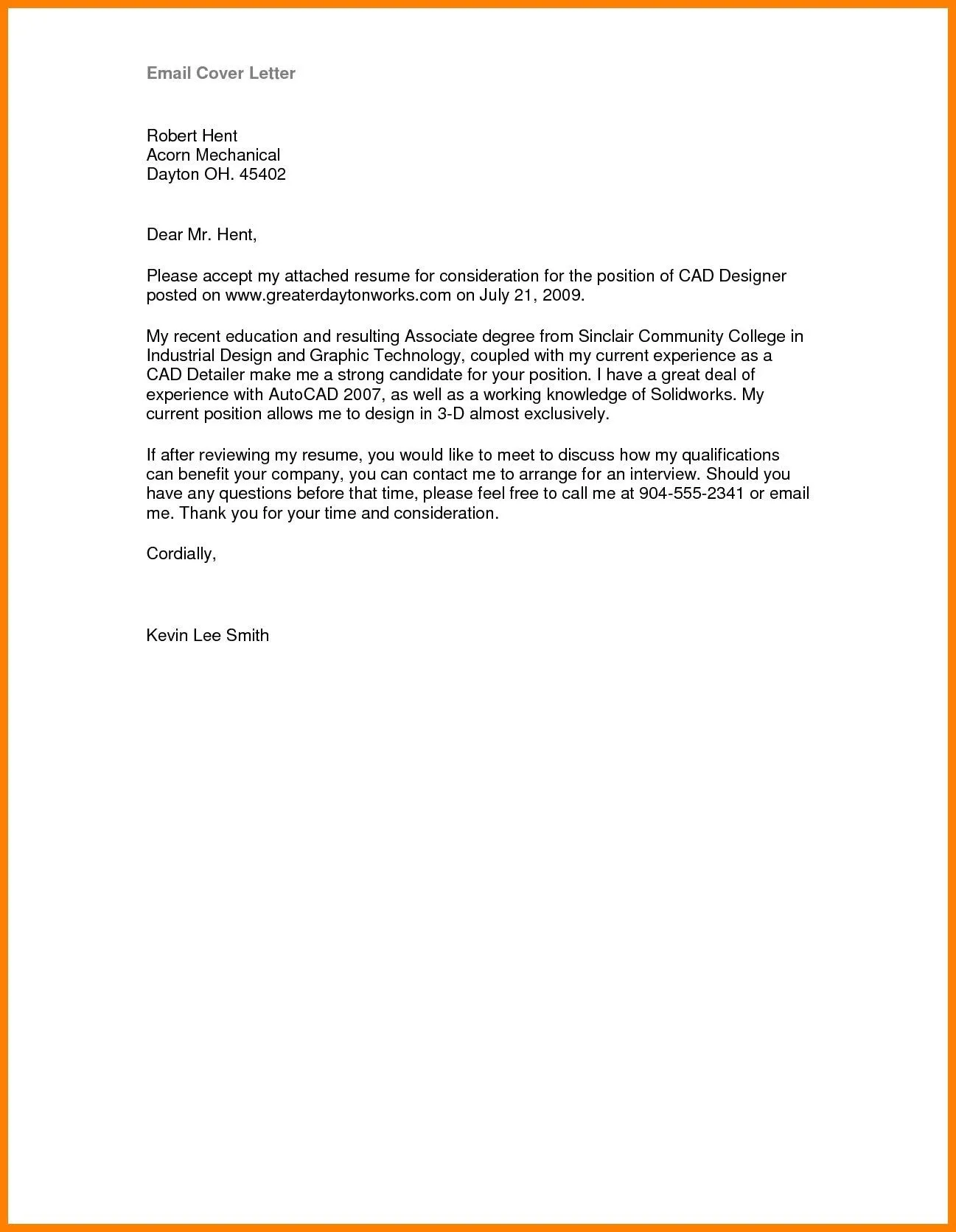
Formatting your cover letter correctly is essential for making a positive impression. Start with a professional and easy-to-read font, like Arial, Times New Roman, or Calibri, with a font size between 10 and 12 points. This ensures your letter is legible and looks professional. Maintain consistent spacing throughout the document, using single or 1.15 line spacing for body text and double spacing between paragraphs to improve readability. Include clear headings and subheadings to organize the content and make it easy for the reader to find key information. Use a simple, clean layout to avoid clutter. Keep the layout professional and easy on the eyes. Use clear and concise language. Aim to keep your cover letter concise, ideally within one page. Focus on highlighting your most relevant skills and experiences, tailoring your letter to the specific job requirements and company culture. Proofread meticulously for any grammatical errors or typos. Errors can detract from your professionalism and undermine your application.
Choosing the Right File Format
The two most common file formats for attaching a cover letter are PDF and DOCX. PDF (Portable Document Format) is the recommended choice for several reasons. It preserves the formatting of your cover letter, ensuring that it appears exactly as you intended, regardless of the recipient’s software or operating system. PDF files are also less likely to be altered or corrupted. DOCX is also a good option. DOCX files are editable, but they can be opened by the hiring manager. This format is commonly used, especially if the employer specifically asks for a DOCX file. When choosing the right format, consider the job posting’s instructions. If the job description doesn’t specify a format, PDF is usually the safest bet. Always save your cover letter with a clear and descriptive file name, such as “YourName_CoverLetter_JobTitle.pdf” or “YourName_CoverLetter.docx.” This helps the recruiter quickly identify the document and keeps your application organized. See [file-format-options.webp] for options.
How to Attach a Cover Letter to an Email Step-by-Step
Attaching your cover letter to an email is a straightforward process. First, create and save your cover letter in a PDF or DOCX format. Then, compose your email, ensuring you include a compelling subject line and a concise email body. In your email, briefly introduce yourself and mention that you’ve attached your cover letter and resume for their review. Next, locate the ‘Attach’ or ‘Paperclip’ icon in your email client (Gmail, Outlook, etc.) and select it. Browse your computer files and select your cover letter file. Once selected, the file will appear as an attachment in your email. Before sending, review your email to ensure that the attachment is correctly attached and the subject line and body of the email are correct. Finally, click ‘Send.’ Remember to double-check the recipient’s email address to ensure it is correct. By following these simple steps, you can effectively attach your cover letter and present a polished job application. See [attach-cover-letter-gmail.webp] for Gmail and other relevant applications.
Compose a Professional Email Subject Line
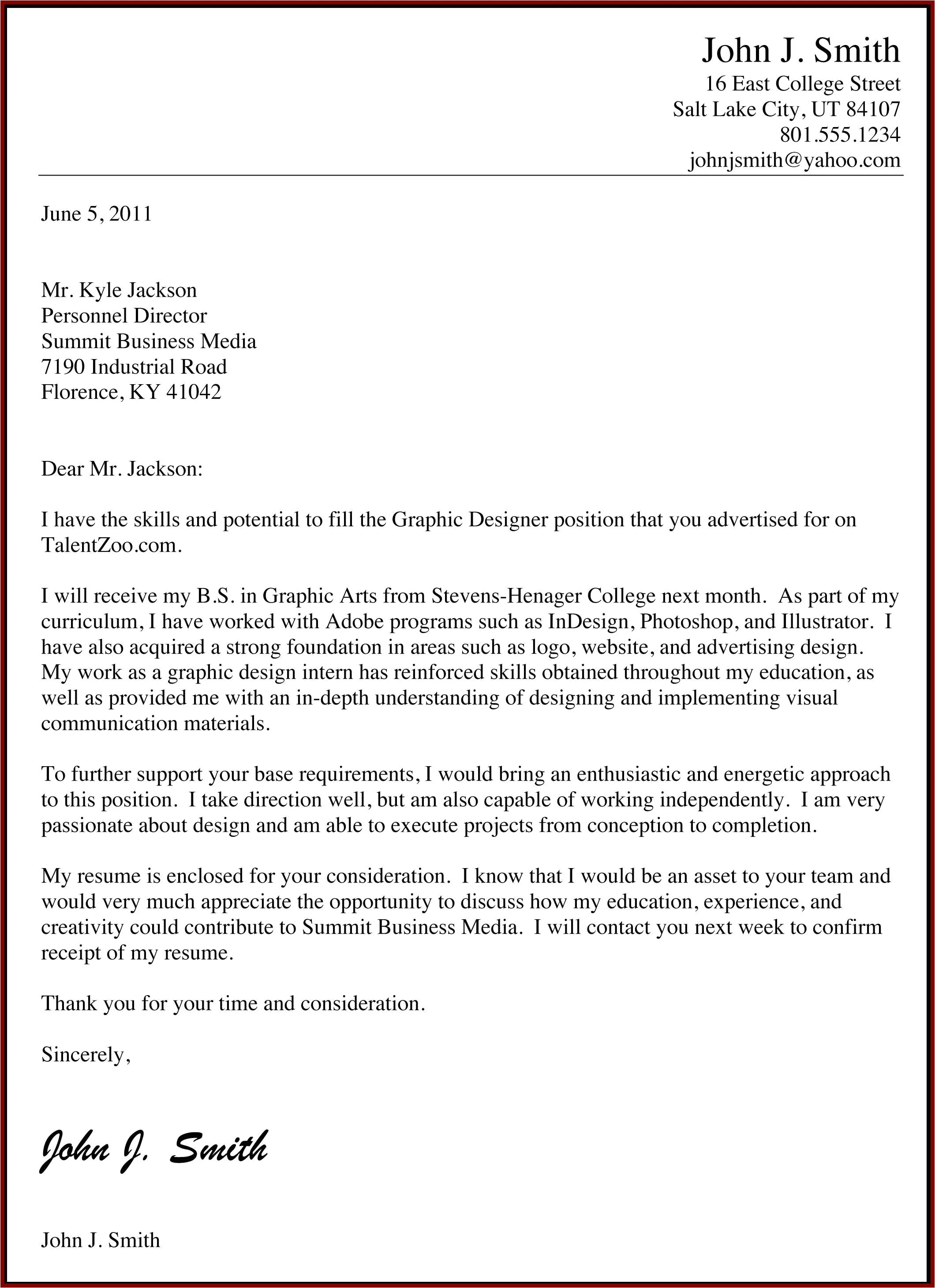
A strong subject line increases the likelihood of your email being opened. Use a subject line that is clear, concise, and relevant to the job. Start with the job title and your name. For example, “Software Engineer Application - John Doe.” This immediately informs the recipient about the nature of the email. If you are responding to a specific job posting, include the job reference number in the subject line. If you are applying without a specific opening, you could use a subject line like “Application for [Your Desired Role] – [Your Name].” Avoid generic subject lines, such as “Job Application.” Ensure you have the job title and your name in there. The subject line is your first chance to make a good impression, so avoid typos and errors. See [email-subject-line.webp] to see some examples of great subject lines.
Write a Concise and Engaging Email Body
The email body serves as a brief introduction and should complement your cover letter. Start by addressing the hiring manager by name, if possible. If the name isn’t available, use a professional greeting like “Dear Hiring Manager.” Keep the body of the email brief and to the point. State the position you’re applying for and briefly explain why you are interested in the role. Highlight a few key skills or experiences that make you a strong candidate. Avoid simply repeating what is in your cover letter or resume. Instead, use the email to briefly summarize your qualifications and encourage the reader to review your attachments. Express your enthusiasm for the opportunity and your interest in the company. Close with a professional closing, such as “Sincerely” or “Best regards,” followed by your full name. See [email-body-example.webp] for an example of an email body.
Attach Your Cover Letter
Attaching your cover letter is a simple process that often involves clicking an “Attach” button or paperclip icon in your email client. Locate this feature in your email service (Gmail, Outlook, etc.) and select your cover letter file from your computer. Double-check to ensure the file is properly attached before sending the email. The attachment should be clearly visible next to the subject line and email body, confirming that it is included. This step is crucial, so always verify the attachment before sending your application. A missing attachment can lead to your application being overlooked. Always use a professional file name, such as “YourName_CoverLetter.pdf.” Using a clear file name helps the recruiter identify your cover letter immediately and keeps your application organized.
Proofread Your Email Before Sending
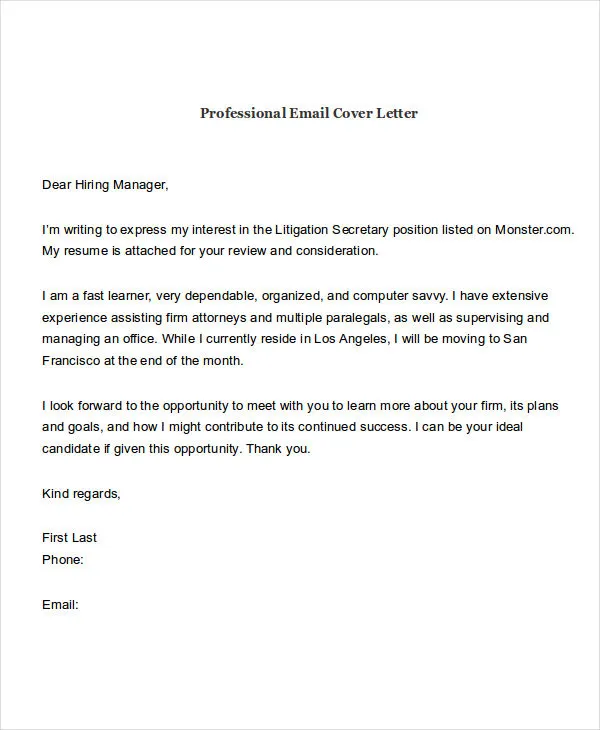
Proofreading your email is a critical step in the application process. Carefully review your email for any spelling errors, grammatical mistakes, and formatting issues. Ensure that the recipient’s name and email address are correct. Check that the subject line is clear and relevant. Also verify that your cover letter and resume are attached and have the correct file names. It’s helpful to read your email aloud, which can help you catch errors you might miss when reading silently. Consider asking a friend or family member to proofread your email as a second pair of eyes can often identify mistakes that you overlook. A polished email reflects your professionalism and attention to detail and can make a lasting impression. Make sure there are no typos or grammatical errors. Errors make your application look sloppy. Take your time and be thorough to make sure your email is perfect before sending.
Sending Your Email
Before sending your job application email, carefully review all components: the subject line, email body, cover letter, and resume. Ensure all details are accurate and the attachments are correctly included. Send the email from a professional-looking email address. Avoid using informal or unprofessional email addresses. Once everything is checked, send the email. Consider sending yourself a test email to ensure all attachments are visible and the email’s formatting is correct. After sending, monitor your email for a response from the hiring manager. Be prepared to respond to any follow-up questions promptly. A well-executed email with an attached cover letter demonstrates your attention to detail and professionalism, greatly increasing your chances of landing an interview.
When to Put a Cover Letter in the Email Body
In some situations, it is appropriate to include your cover letter in the email body. If the job posting explicitly requests that you put the cover letter in the email body, follow their instructions. Some companies may have restrictions on attachments. Some Applicant Tracking Systems (ATS) may not parse attachments correctly, making it difficult for recruiters to review your application. In these cases, copying and pasting your cover letter into the email body ensures the hiring manager can easily read it. Also, if you’re sending a very short or informal message, including the cover letter in the email body can save the recipient time. Always format your cover letter correctly, even when including it in the email body. Use paragraphs and appropriate spacing to improve readability. See [cover-letter-body.webp] for an example of a cover letter in the body of the email.
Best Practices for Including a Cover Letter in the Email Body
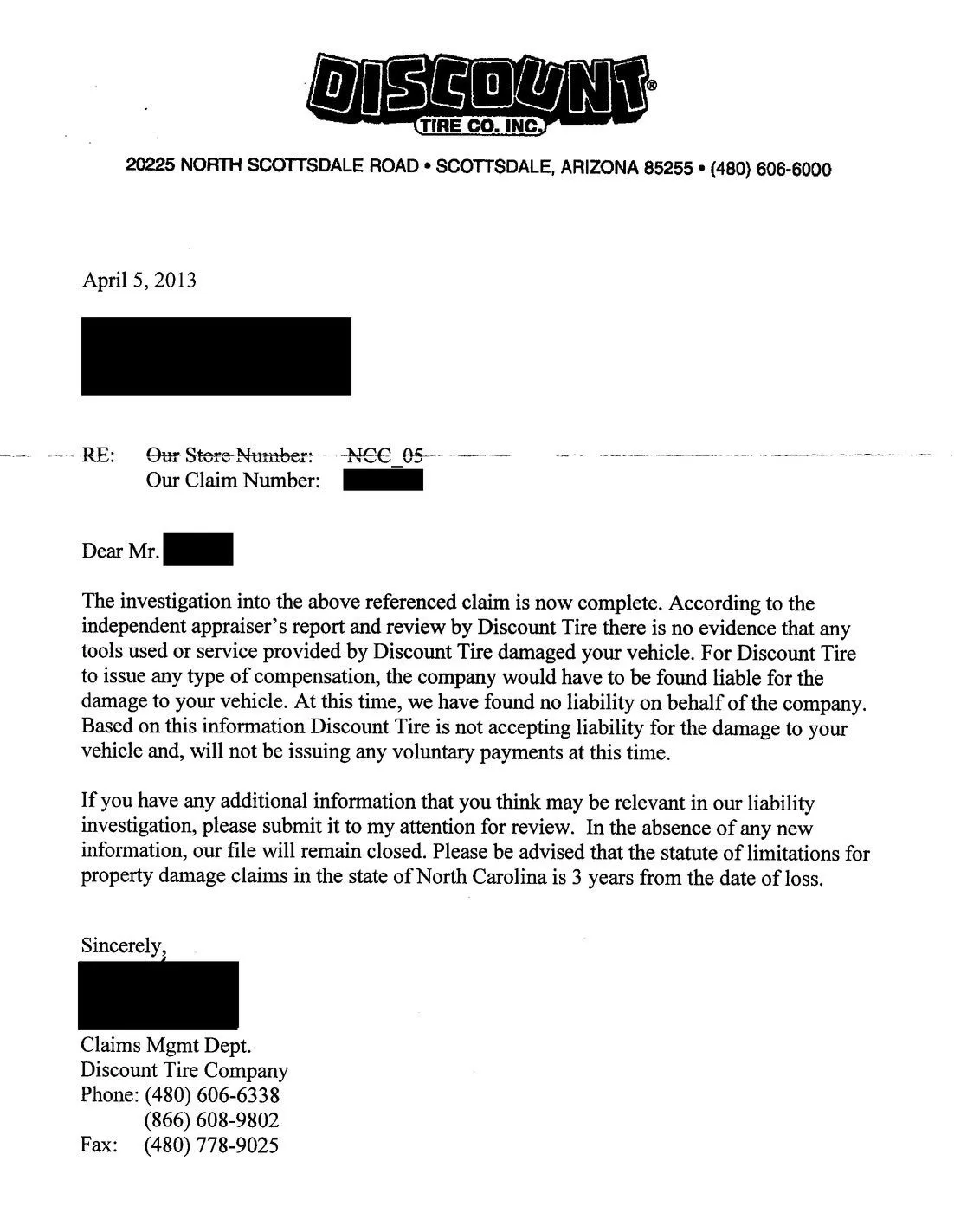
When including a cover letter in the email body, keep it concise and easy to read. Use a clear and professional font, such as Arial or Times New Roman. Maintain consistent spacing and formatting to ensure readability. Start with a formal greeting and address the hiring manager or the recruiter by name if known. Begin with a brief, engaging introduction that highlights your enthusiasm for the role and your qualifications. Clearly state the position you are applying for and how you found the opportunity. Focus on your most relevant skills and experiences, tailoring your letter to the job requirements. Express your interest in the company and your eagerness to contribute to their success. Use concise paragraphs, and avoid lengthy sentences. Include a call to action. Conclude with a professional closing, such as “Sincerely” or “Best regards,” followed by your full name and contact information. Proofread your email thoroughly for spelling and grammar errors before sending it.
Which Option is Right for You
Deciding whether to attach or include your cover letter in the email body depends on the specific job posting instructions and your personal preference. If the job posting specifies a format, follow their guidelines. If the posting doesn’t provide specific instructions, attaching your cover letter as a PDF is often the best practice, ensuring your formatting is preserved. Consider the company’s culture and the level of formality expected. Some companies prefer attachments while others prefer body text. If you are unsure, it’s always a good idea to research the company’s application process and adapt to their preferred method. Regardless of which option you choose, ensure your cover letter is well-written, tailored to the job, and free of errors. Whether attached or included in the body, your cover letter is a critical component of your job application and a chance to make a great first impression.
